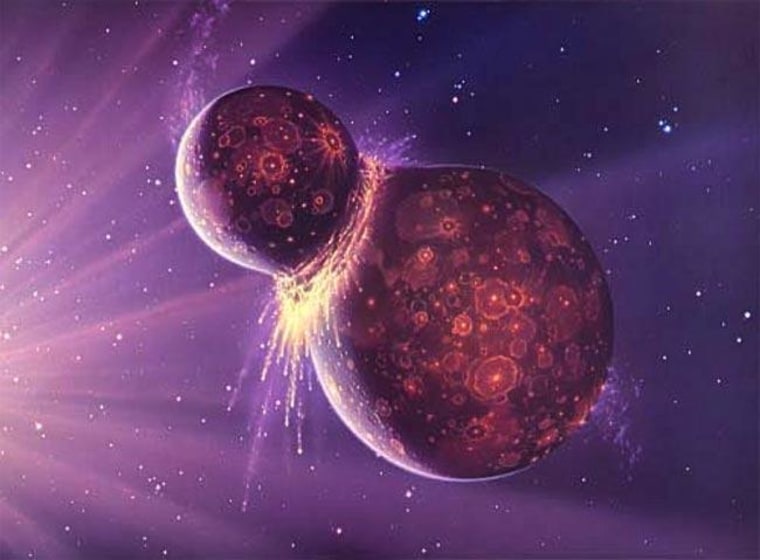Lunar rocks brought back by the Apollo astronauts more than 40 years ago contain evidence of a Mars-sized planet that scientists believe crashed into Earth and created the moon, new research shows.
German scientists using a new technique said they detected a slight chemical difference between Earth rocks and moon rocks. The finding serves as evidence that material from another body besides Earth contributed to the moon’s formation 4.5 billion years ago.
Scientists believe the moon formed from a cloud of debris launched into space after a Mars-sized body called Theia crashed into young Earth.

Different planets in the solar system have slightly different chemical makeups. Therefore, scientists suspected that moon rocks might hold telltale chemical fingerprints of whatever body smashed into Earth. But until now, the evidence was elusive.
“We have developed a technique that guarantees perfect separation,” of oxygen isotopes from other trace gases, Daniel Herwartz, with the University of Cologne in Germany, wrote in an email to Reuters. "The differences are small and difficult to detect, but they are there."
Herwartz is the lead author of a paper on the discovery, published this week in the journal Science.
The results indicate that the composition of the moon is about 50 percent Theia and 50 percent Earth, although more work is needed to confirm that estimate.
The team analyzed rocks brought back to Earth by NASA astronauts during the Apollo 11, Apollo 12 and Apollo 16 missions to the moon, which took place in 1969 and 1972.
"This work is the first to claim to see such a difference in the isotopes of oxygen," said Robin Canup, a planetary scientist with the Southwest Research Institute in Boulder, Colorado, who was not involved in the research. "The reported difference between the Earth and moon is extremely small, small enough that I think there will be debate as to whether the difference is real or an artifact of how one interprets the data."